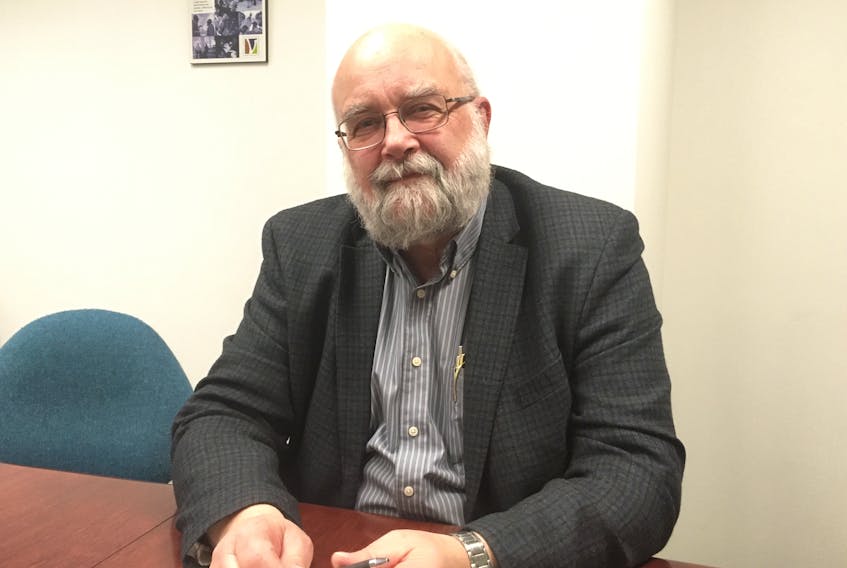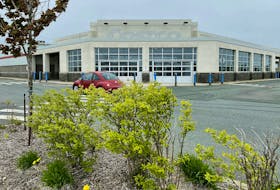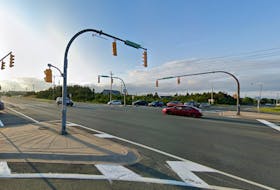Significant power rate increases are coming to Newfoundland and Labrador. The options for keeping those rates from overwhelming home and business owners are still being discussed, mainly within committees inside of the provincial government and Nalcor Energy — but not the regulated utilities.
The development and review of options is government-led. Final decisions on how rates will be dealt with will come from the provincial government.
The Public Utilities Board (PUB) is reviewing a proposal from Newfoundland and Labrador Hydro for power rate increases in the next year.
But these increases — to be determined by the PUB — will still not touch the significant costs coming from the estimated $12.7-billion Muskrat Falls hydroelectric project.
RELATED STORIES:
Energy-gobbling Bitcoin miners, data centres raised at PUB hearings
Consumer Advocate says N.L. Hydro needs to do more to address consumer costs
There have been power rate increases before, “but never like what we’re facing with Muskrat Falls,” Newfoundland and Labrador Hydro president Jim Haynes said in an interview with The Telegram Friday.
If operating as envisioned by Hydro, the deferral account will keep rates from hitting fully in the first year of Muskrat Falls power, instead stepping everyone up over a slightly extended period of time.
A “step change” in power rates is unavoidable, he said, even if Newfoundland and Labrador Hydro manages to make the introduction of new rates any easier.
In response to questions, at one point Haynes reiterated his testimony before the PUB last month, saying Newfoundland and Labrador Hydro’s parent company Nalcor Energy and possibly the provincial government will have to step in to address the real meat of Muskrat Falls costs.
Since these costs are not currently before the PUB, the responses are not being discussed in any detail there.
Rate mitigation committee
The coming gap in money for power rates — finding a way for the province to remain in line with other provinces in Atlantic Canada once Muskrat Falls is online — requires roughly $400 million a year. That’s with the gauge of $60 million to $70 million required to decrease customer rates by one cent per kilowatt hour.
Nalcor Energy’s rate mitigation committee has been tasked with finding $210 million a year to help, beginning in 2020 as Muskrat Falls comes to full power.
That’s been ordered by the Liberal government from the Crown energy corporation. The offset would move up to $245 million in later years, and is being referred to as the “preliminary rate management reserve.”
Natural Resources Minister Siobhan Coady told The Telegram work continues inside of Nalcor to determine exactly where the money will come from — looking at both available revenue and spending reductions to free up dollars.
In a separate process, a committee within the government has been looking at long-term rate mitigation. That committee includes government staff from Finance and Natural Resources, and Nalcor Energy representatives.
There is, by all accounts to date, no consumer advocate representation, no representation for the island industrial customers who take an interest in rate proceedings, or other consumer groups.
There has been no formal report from that committee to Coady that might be obtained, but she is aware of the committee’s work.
“The big thing is, I think, we have to be open for all ideas on how we rate manage,” she told The Telegram Friday, adding that the clear direction to both rate committees has been to put every idea on the table.
Sales, electrification
In terms of what has been put on the table, there are few specific items so far.
Both Haynes and Coady mentioned greater electrification of public buildings and finding ways to encourage people to stay on the electrical system as power rates rise, and add more onto the local system.
But on public buildings, there appeared to be a contradiction with the thinking of Land Resources Minister Gerry Byrne.
In a separate interview last month, following up on budget items, Byrne told The Telegram he’s interested in seeing more public buildings moved from oil-fired boilers onto wood-based fuels, to help expand the domestic market for forestry products.
He noted the Department of Transportation and Works has specifically included consideration of expertise in handling biothermal energy production in its request for qualifications for the new long-term care homes in Grand Falls-Windsor and Gander. There are no decisions yet on which bidders have met the request for qualifications, he said.
The new facilities are not guaranteed to be wood-heated at this point.
Coady said the ideas for public buildings are not mutually exclusive. The province can transition buildings off of oil and onto forestry-based energy, as well as move more onto the electrical system, she said.
Exactly what happens where and if it makes sense at all?
“That’s why there has to be an analysis done of all these options,” she said.
Generally speaking, Haynes said, the more energy used on the island the better.
Opposition members have asked the government if there will be any sale of public assets to help pay for Muskrat Falls and assist ratepayers. This week, Fortis CEO Barry Perry said he is interested in seeing Fortis subsidiary Newfoundland Power take on N.L. Hydro distribution lines “for a fair value,” suggesting the sale could help Hydro with power rates.
Haynes said he has not been in any related discussions to date.
Coady offered a similar response, but also didn’t close the door to the idea.
“There’s no reason why not to consider whether or not it would be valuable for them to have more (power lines),” she said, going back to her mantra of all options on the table.
The deferral account
Coady is supportive of the deferral account — Hydro’s proposal before the PUB, designed to slow the speed of the increase in rates.
It is not going to keep the bill from being paid, but is offered as a way to limit rate shock.
If operating as envisioned by Hydro, it will keep rates from hitting fully in the first year of Muskrat Falls power, instead stepping everyone up over a slightly extended period of time.
It essentially tucks away any revenue brought in as a result of having new transmission lines from the Muskrat Falls project available this year, allowing imports of cheaper-than-local power. That revenue would be applied in future, to essentially give rate increases a smaller slope.
But the revenue stops collecting for the account once the Muskrat Falls generators come online. It’s temporary aid.
Once the Muskrat Falls hydro plant comes online, the power lines are filled with Muskrat Falls power and ratepayers will use more expensive Muskrat Falls power.
The money in the deferral account will run out.
The account hasn’t yet been approved by the PUB. In the PUB hearings, a significant question was raised as to whether or not an existing order-in-council issued by the provincial cabinet would prohibit the creation of the account.
That question has yet to be resolved.
Either way, the account and power imports would be a small action in the face of the monster of forecasted power costs.
Find this story informative? Subscribe to our e-edition for $1.99 a week at http://bit.ly/2rofvW2.









